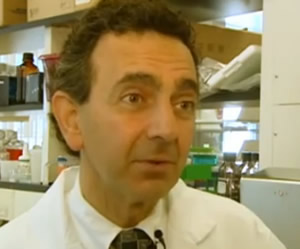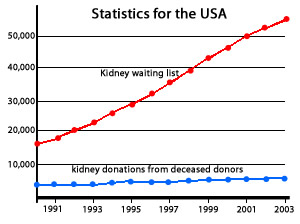Stem cell
Science as a human endeavour.
There are more than 114,000 people, in the USA, waiting for organ transplants. Organ transplantation has an inherent risk, and all too often there aren't enough donors to meet the ever growing demand. Patients, on the waiting list, must endure painful and dialysis procedures on a daily basis. Thanks to scientific research and technological breakthroughs we inch ever closer to creating organs and tissues from patient's own cells that are safe for transplanting.
Dr. Anthony Atala, shown on the right, is Director of the Wake Forest Institute for Regenerative Medicine and has been working on growing and regenerating tissues and organs for a number of years.
In 2007, Atala and a team of Harvard University researchers showed that stem cells can be harvested from the amniotic fluid of pregnant women. What has happened since then has revolutionised medicine. Development of smart bio-materials and tissue fabrication technology has given hope to many patients on waiting lists for organ transplants and other debilitating diseases.

Recently, Atala has demonstrated an experiment of printing organs with 3D printers using solutions of specialised cells. Experiments are still at an early stage, but results are yielding structures, such as small blood vessels and bladders that are used to repair human organs.
It might sound like science fiction, but the future of using scanners and printers to produce replacement parts is here.
A WCBS news report from 9/28/11 by health correspondent, Dr. Max Gomez. Dr. Gomez follows up with a patient who received a lab grown bladder created using his own stem cells, in 2001, to replace his own bladder which was damaged by spina bifida.
Dr. Anthony Atala outlines the work being done by his team. At the time of this report, the institute was growing over 20 types of tissues and organs.
1) How does Dr Atala grow organs?
2) What are some of the tissues and organs currently grown in the lab?
3) Explain how conventional 3D printers are used to build organs.
4) How will the new technology benefit people on an organ donor waiting list?
5) Implanted organs are rejected by the recipient's immune system. Drugs to suppress the immune system are needed in order to stop rejection. How is this method of organ growth better than organ transplanting?
6) Do manufactured organs have to have the same shape as the natural organs in order to function the same way? Explain why or why not.
7) By building organs and tissues from Human cells we can better understand the impact of toxins and pharmaceuticals on the Human body. Explain how?
8) One of the greatest difficulties is to produce tissues that are more than a millimetre thick without suffocating or starving cells. A supply of blood vessels is needed to maintain the health of the cells. Why do you think this is the case.
9) This new field of study is multidisciplinary. What different types of disciplines are needed to undertake this new field of medicine?
In October of 2012 two scientists, one from England and the other from Japan, won the Nobel Prize in medicine for the ground-breaking discovery that cells in the body can be reprogrammed into completely different kinds. This technique negates the need to use embryonic stem cells.
The work of British researcher John Gurdon and Japanese scientist Shinya Yamanaka received the award and hope that their technique can someday give hope to those suffering from diseases such as Parkinson's disease by implanting new, healthy tissues derived from the patients own cells.
Once created, these stem cells can be made to develop into other cell types. Skin cells, for example, can be made into brain cells. Researchers were able to transform skin cells from mice into egg cells that ultimately produced live healthy mice.
Their work shows that while cells might be specialised in one thing, they have the potential to be reprogrammed to do something completely different and this is the reason for the excitement surrounding stem cell biology.

In May, 2013 a team from St Vincents in Melbourne reported that it had used 3D printing technology to form various body parts, including a 5 cm blood vessel which could be used to replace damaged arteries within 5 years. Professor Mark Cook, director of neurosciences at St Vincent's Hospital, described 3D organ printing as being similar to any other form of printing, the only exception being that instead of ink solutions, solutions composed of live cells and nutrient rich mediums are used. Confidence is high that, by the 2025, scientist will be able to fabricate fully functional organs, made of the recipients own cells. This will eliminate existing complications with rejection.
It is hoped that this brave new world technology will end the long list of people waiting for an organ transplant.

11) Consider the image on the right.
a) What does the graph reveal about the kidney donations and the waiting list?
b) Discuss possible causes of such trends, such as diet, mistrust of the medical profession.
b) Why is 3D organ printing technology so vital?

